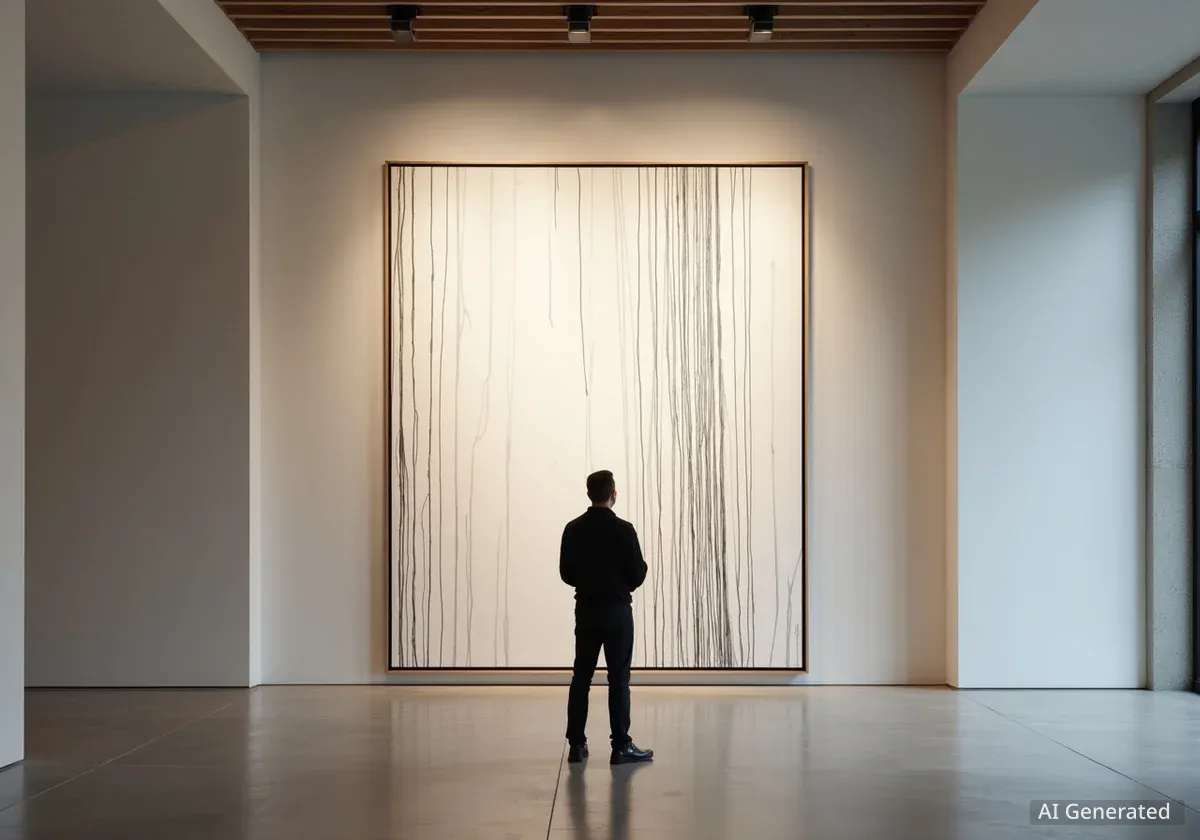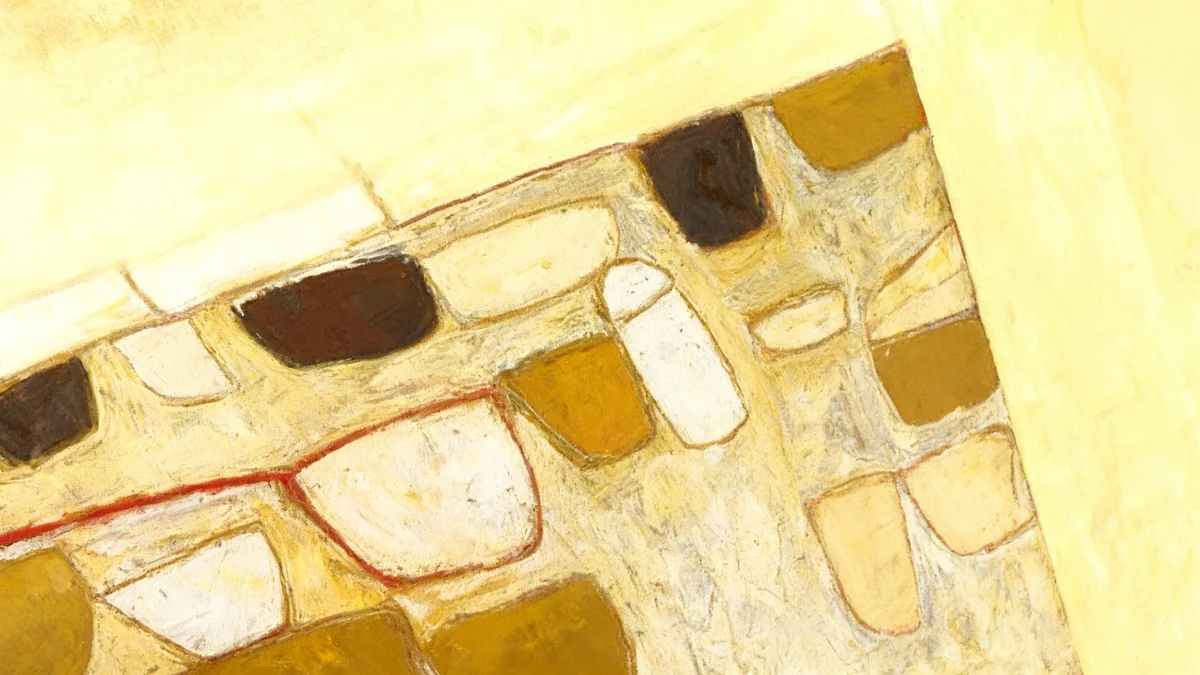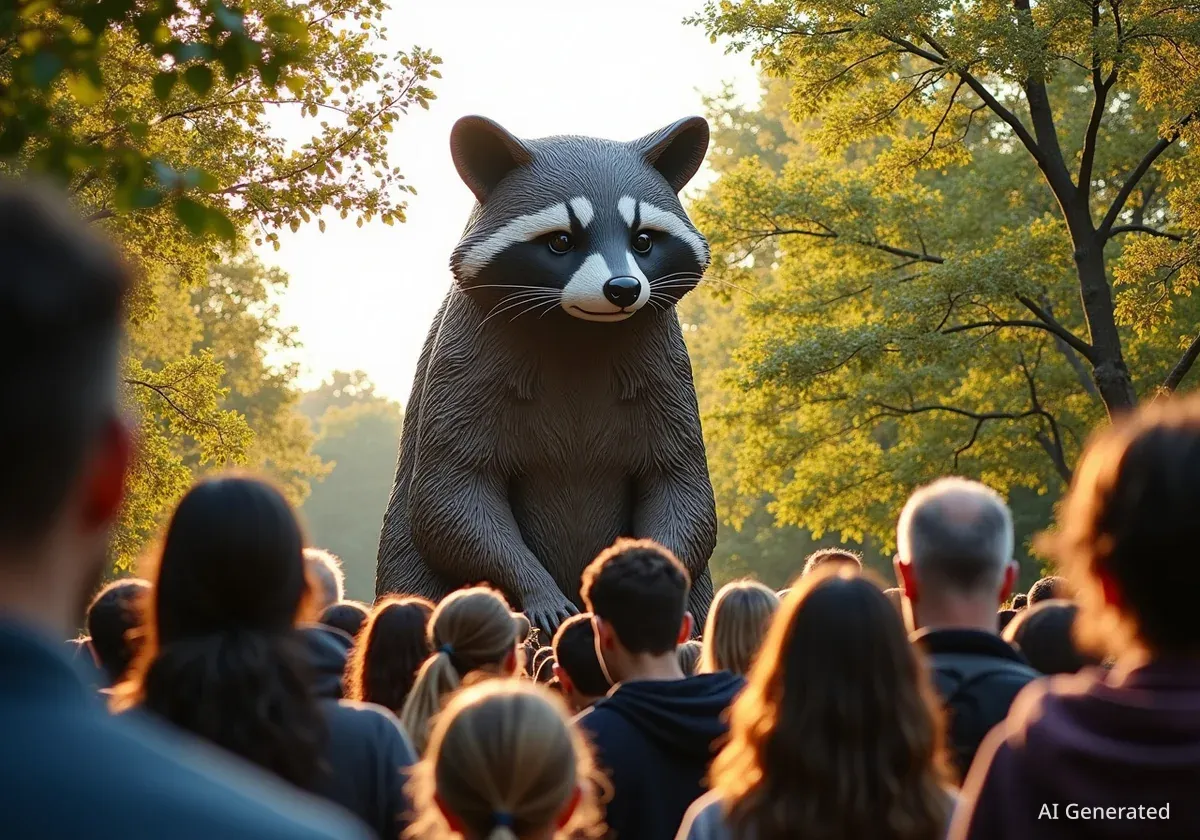Danish artist Eva Helene Pade has opened her first solo exhibition, titled 'Søgelys' (searchlight), at Thaddaeus Ropac's Ely House gallery in London. The exhibition features a mix of her signature large-scale paintings and smaller works. This new show follows her successful institutional debut, 'Forårsofret' (The Rite of Spring), at the ARKEN Museum of Contemporary Art.
Pade, known for her dramatic use of balance and light, creates scenes that explore tension and emotion. Her work, while remaining paintings, aims to bridge the gap between static two-dimensional art and the temporal experience of dance and performance.
Key Takeaways
- Eva Helene Pade's solo exhibition 'Søgelys' is on view at Thaddaeus Ropac in London.
- The show features both monumental and smaller paintings.
- Pade became the youngest artist represented by Thaddaeus Ropac last fall.
- Her work explores themes of anguish, ecstasy, and contemporary confusion.
- Pade uses unique installation methods, presenting paintings on free-standing metal beams.
Youngest Artist at Thaddaeus Ropac Gallery
Eva Helene Pade joined the roster of major art gallery Thaddaeus Ropac last autumn. This made her the youngest artist represented by the gallery. Her London solo show marks a significant milestone in her career.
The exhibition 'Søgelys' runs through December 20th. It showcases the evolution of her artistic style and her exploration of complex themes. Pade's approach to painting challenges traditional expectations, as she often describes the medium itself as 'a bit dissatisfying' for its static nature.
"It’s like a disappointing animal that doesn’t want to do all the tricks," Pade quipped, "but it does so much—you could also say it doesn’t need to do more."
Her paintings, however, aim to do more. They are charged with an electrifying tension, moving between states of anguish and ecstasy. This dynamic quality is central to her current body of work.
Artist Milestones
- 2021: Earned BFA from The Danish Royal Academy of Fine Arts.
- 2022: Held first solo show with Galleri Nicolai Wallner, beginning a shift in her artistic style.
- Last Fall: Became the youngest artist represented by Thaddaeus Ropac.
- Recently: Debuted 'Forårsofret' at ARKEN Museum of Contemporary Art.
- This Week: Opened 'Søgelys' at Thaddaeus Ropac, London.
From Copenhagen to Paris: A Shift in Artistic Focus
Pade's journey to her current artistic voice involved a significant geographical shift. She grew up in Odense, Denmark, and completed her BFA in Copenhagen in 2021. Before finishing her MFA last year, she signed with Galleri Nicolai Wallner, which still co-represents her.
Around 2022, her style began to change. Earlier works featured defined figures, such as 'A Story to Be Told #14' (2021), which set her auction record in November. These defined forms gradually gave way to softer edges and more ambiguous imagery.
Background on Pade's Development
Pade explained that time and experience have allowed her to refine her expression. "You have less you need to prove, so everything doesn’t have to be as stylized, and you become better at expressing what you want to say, faster," she stated. This maturation is evident in her recent works.
Moving to Paris in 2023 further influenced her artistic practice. She noted a lack of challenge in Copenhagen. "I spent time in my studio but without feeling the energy that needs to be there," she recounted. In Paris, she initially painted in her flat before securing a spacious studio in Pantin, a suburb of the city. This new studio allowed her to work on the large canvases she now favors.
Monumental Scale and Dance Influence
The central paintings in 'Søgelys' are approximately 8 feet tall and 9 feet wide. These dimensions are often associated with historical paintings, giving her contemporary works a grand scale. The larger workspace in Paris enabled her to pursue this preferred size.
Paris also introduced Pade to a deeper engagement with dance. While she had attended opera and classical music performances, ballet was a new experience. "That’s become a bigger part," she said. She also started watching more performance art. These performing arts, unlike painting, occupy both time and space, realms Pade now seeks to explore within her canvases.
Innovative Installation and Symbolic Elements
Pade's exhibition at ARKEN, 'Forårsofret,' featured an innovative installation method. Her 10 canvases were not hung on walls but stood freely on metal stands throughout the subterranean gallery. Each painting depicted a narrative from German choreographer Pina Bausch’s interpretation of Igor Stravinsky’s 1913 ballet, 'The Rite of Spring.'
The original ballet was controversial for its dissonant choreography and pagan themes. Pade's installation at ARKEN highlighted this narrative through a unique viewing experience. Spotlights illuminated the backs of the paintings, revealing initial markings and the complete artistic process to viewers as they moved through the space.
"That became, now, a thing I would like to do more," Pade noted, reflecting on the impact of seeing both the front and back of her works.
The 'Søgelys' exhibition in London adopts a similar approach. Works are perched on ceiling-to-floor metal beams within the 18th-century venue of Thaddaeus Ropac, creating an immersive and dynamic viewing experience.
References and Contemporary Relevance
Pade has a reputation for incorporating art-historic references into her work. These can be both conscious and unconscious. Her influences range from the Expressionism of German painter Otto Dix to the golden haze often seen in the works of Vienna Secessionist Gustav Klimt.
In 'Forårsofret,' her painting 'Forfædrenes ritual' (Ritual of the Ancestors) (2024–25) directly referenced French Impressionist Édouard Manet’s 'The Execution of Emperor Maximilian' (1867–69), which depicted the violent end of French colonialism in Mexico.
The artist also became interested in the symbolic meaning of smoke following her ARKEN show. She sees smoke as a metaphor for the current state of global affairs. According to Pade, the prevalence of social media conspiracy theories, real corruption, and multiple crises creates a societal atmosphere of "exhausted bewilderment."
"Everything is confusing and ambiguous," Pade explained. By avoiding a linear narrative in 'Søgelys,' she aims to keep viewers engaged in that sense of confusion and intensity. This approach allows the audience to confront the complexities of contemporary life within her art.
'Søgelys': An Ensemble of High-Contrast Works
The London exhibition’s largest work, 'Skygge over mængden' (Shadow above the crowd) (2025), exemplifies this theme. It features a flaxen haze enveloping a group of nude figures. As viewers step back, the weightless shadows within the haze resolve into the shape of a large airplane, adding a layer of hidden meaning.
This haze continues into subsequent paintings, depicting frenzied dance floors where figures tangle and move. These scenes blur the lines between individual and collective experiences, highlighting the complexities of group dynamics.
Key Themes in 'Søgelys'
- Ambiguity: Reflects the confusing nature of modern events.
- Collective vs. Individual: Explores the dynamic between groups and single figures.
- Hidden Meanings: Visual elements reveal new forms upon closer inspection.
- Dramatic Light: Used to guide the viewer's gaze and create deception.
Across the canvases in 'Søgelys,' certain archetypes reappear, transforming the exhibition into a cohesive ensemble rather than a collection of separate works. The show presents some of Pade’s most high-contrast pieces to date, playing with light in ways that can deceive the viewer.
For example, in 'Den fundne' (The found one) (2025), the viewer's initial focus is drawn to dancers on a stage. However, the true focal point is a less conspicuous figure collapsed in the crowd, reminiscent of a Renaissance pietà. This subtle redirection of attention underscores Pade’s belief that there is always more to a scene than initially perceived. Her paintings encourage viewers to look, and then look again, discovering deeper layers of meaning.




